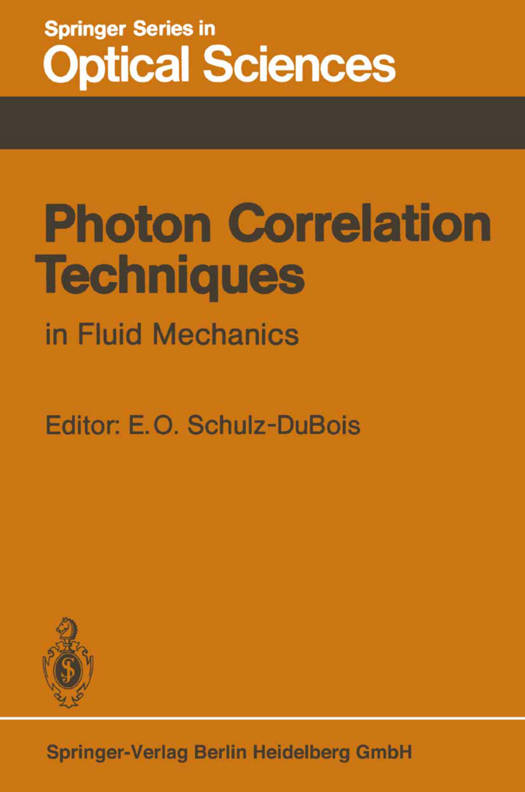
- Afhalen na 1 uur in een winkel met voorraad
- Gratis thuislevering in België vanaf € 30
- Ruim aanbod met 7 miljoen producten
- Afhalen na 1 uur in een winkel met voorraad
- Gratis thuislevering in België vanaf € 30
- Ruim aanbod met 7 miljoen producten
Zoeken
Photon Correlation Techniques in Fluid Mechanics
Proceedings of the 5th International Conference at Kiel-Damp, Fed. Rep. of Germany, May 23-26, 1982
€ 105,45
+ 210 punten
Omschrijving
Photon correlation is a kind of spectroscopy designed to identify optical frequency shifts and line-broadening effects in the range of many MHz down to a few Hz. The optical intensity is measured in terms of single photon- detection events which result in current pulses at the output of photomulti- plier tubes. This signal is processed in real time in a special-purpose paral- lel processor known as a correlator. The resulting photon correlation func- tion, a function in the time domain, contains the desired spectral informa- tion, which may be extracted by a suitable algorithm. Due to the non-intrusive nature and the sound theoretical basis of photon correlation, the phenomena under study are not disturbed, and the parameters in question can be precisely evaluated. For these reasons photon correlation has become a valuable and in many instances indispensable technique in two distinct fields. One of these is velocimetry in fluid flow. This includes hydro- and aerodynamic processes in liquids, gases, or flames where the velo- city field may be stationary, time periodic, or turbulent, and may range from micrometers per second for motion inside biological cells to one kilometer per second for supersonic flow. The other major field is stochastic particle propagation due to Brownian motion.
Specificaties
Betrokkenen
- Uitgeverij:
Inhoud
- Aantal bladzijden:
- 402
- Taal:
- Engels
- Reeks:
- Reeksnummer:
- nr. 38
Eigenschappen
- Productcode (EAN):
- 9783662135297
- Verschijningsdatum:
- 20/11/2013
- Uitvoering:
- Paperback
- Formaat:
- Trade paperback (VS)
- Afmetingen:
- 152 mm x 229 mm
- Gewicht:
- 553 g

Alleen bij Standaard Boekhandel
+ 210 punten op je klantenkaart van Standaard Boekhandel
Beoordelingen
We publiceren alleen reviews die voldoen aan de voorwaarden voor reviews. Bekijk onze voorwaarden voor reviews.










